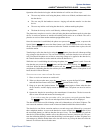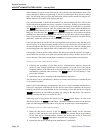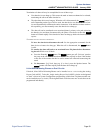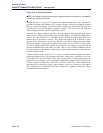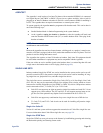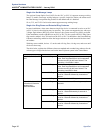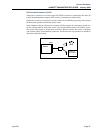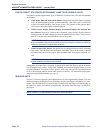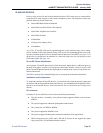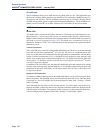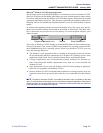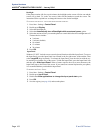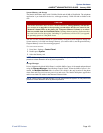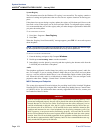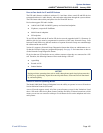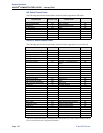
Page 99
System Hardware
AXXESS
®
ADMINISTRATOR’S GUIDE – January 2004
IP and SIP Devices
IP AND SIP DEVICES
Devices using Axxess IP and Session Initiation Protocol (SIP) allow users to communicate
using the Local Area Network (LAN) and the telephone system. The telephone system sup-
ports the following IP and SIP devices:
• Model 8000 Multi-Protocol Endpoints
• Model 8664 and 8665 Wireless IP Endpoints
• Model 8601 Softphone for Pocket PC
• Model 8660 IP Phone
• IP PhonePlus
• IP Single-Line Adapter (SLA)
• IP SoftPhone
As of V8.1, IP and SIP calls can be routed through the system cabinet or they can be config-
ured as members of the same Network Group. If the devices are routed through the system cab-
inet, they terminate at the 32-Device Internet Protocol Resource Card (IPRC) (see page 74). If
the devices are configured to be members of a Network Group, they can use the peer-to-peer
(P2P) audio feature (see page 105).
IP and SIP Phone Identification
At first glance, IP and SIP phones look nearly identical to digital phones. Additional ports on
the back of the phone, used for LAN and power connections, identify a phone as an IP or SIP
phone. IP and SIP phones operate like digital phones installed on the system except for the lim-
itations listed below.
The IP SLA operates like a standard single-line set except for the limitations listed below.
Installation and Configuration
To install and configure IP and SIP devices, you must know the required network settings and
be familiar with the associated hardware and software. For installation and configuration infor
-
mation for all IP and SIP devices, refer to the latest IP Devices Installation and Configuration
Manual.
IP Limitations
Currently, IP devices (SIP and Axxess IP) have the following limitations:
• They do not have a secondary voice path and cannot support off-hook voice announce
(OHVA).
• They do not support the enhanced speakerphone mode feature.
• They cannot use a PCDPM or MDPM.
• They do not support the DSS/BLF units.
• They do not support Desktop Open Architecture Interface (OAI) applications.
• While using peer-to-peer (P2P) audio, SIP and IP devices do not support the Agent
Help, Record-A-Call, and Station Monitor features.



